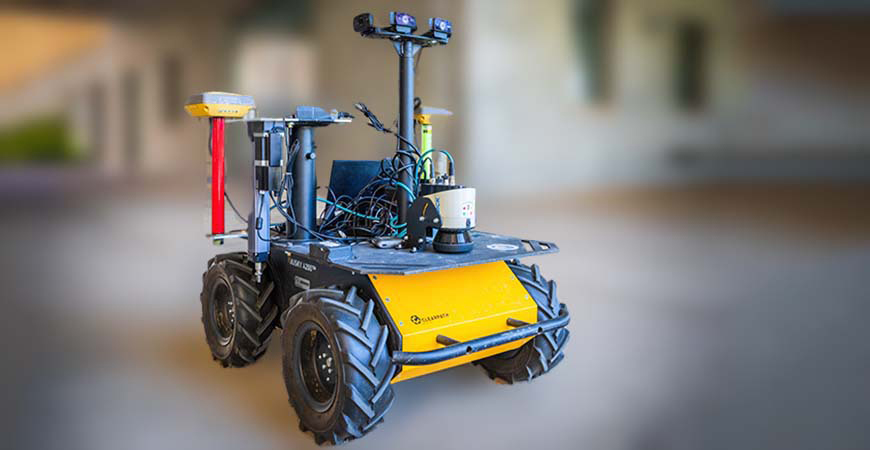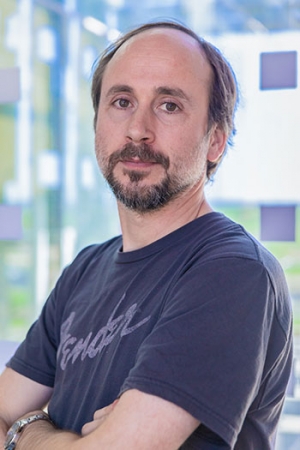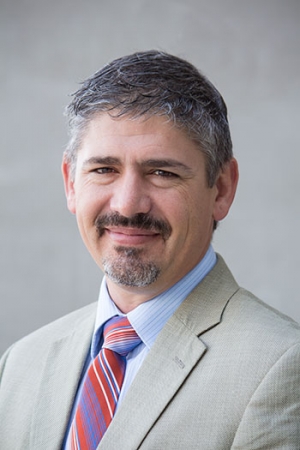
One of the biggest challenges in managing crops, especially in large fields, is knowing how much water each section of a field needs. Determining that accurately is a cumbersome process that requires people to hand-pluck individual leaves from plants, put them in pressure chambers and apply air pressure to see when water begins to leak from the leaf stems.
That kind of testing is time consuming and means that farmers can only reach so many areas of a field each day and cannot test as frequently as they should.
Computer Science and Engineering Chair Professor Stefano Carpin, Environmental Engineering Professor Joshua Viers and professors Konstantinos Karydis and Amit K. Roy-Chowdhury at UC Riverside recently received a more than $1 million grant from the U.S. Department of Agriculture through the National Science Foundation’s National Robotics Initiative to address these challenges.
They are developing a robotic pressure chamber that can harvest its own sample leaves and test them on site, immediately, to provide the freshest data. The system will work to gather data even in large fields, and over a period of time rather than just providing a snapshot.
Having field data that’s updated frequently can help farmers plan irrigation frequency and conserve water, optimize the time and effort spent by crop specialists, and help decrease some of the costs in the food-production chain.
Current measuring techniques involve collecting leaf samples and transporting all of them to an off-site location, where testers can use very accurate, expensive pressure chambers; and sampling and analyzing leaf samples in the field using hand-held pressure chambers, Karydis explained.

In the first category, leaf samples can get mixed up, making it impossible to track them back to the specific areas of the field they came from, Karydis said.
“In addition, the properties of the leaf might vary given the time elapsed between being sampled and being analyzed, which in turn may yield misleading results,” he said.
Hand-held instruments in the field can be less accurate, but testing can be done multiple times with different leaves from the same plants, but this method is time- and labor-intensive, and must be undertaken by specially trained personnel, he said.
“If we’re going to use precision agriculture, we need the most accurate information-gathering systems we can make,” Carpin said.
He has already worked with colleagues at UCs Davis and Berkeley to create the Robot-Assisted Precision Irrigation Delivery (RAPID) system, which travels along rows of crops adjusting irrigation flows according to sensor data that tells the robot precisely what’s needed for each plant.
They’ll use the same base robot as RAPID, but equip it with GPS and a pressure chamber being designed by the researchers at Riverside, and pair it with drones that can survey the fields and direct the robot to areas of interest.
“Using this process, farmers could survey plants all day long, even in large fields,” Carpin said.

The four-year project will support graduate students as well as summer research opportunities for undergraduates. The project has four phases: development of the chamber; developing machine-vision so the robot can “see” the water coming from the leaf stems; coordinating multiple robots — in the air and on the ground; and evaluation.
The researchers plan to have the first set of automated pressure chamber prototypes fabricated by Spring 2021, and to evaluate their performance and refine designs in controlled settings over Spring and Summer 2021. They expect to have a completed setup by Winter 2022 so they can begin controlled field testing.
“We have to be quick about it because if we miss a peak growing season, we have to wait another nine months for the next one,” Carpin said. “We’d like to be able to start testing next summer and test every summer, and we need to be able to maximize the tests.”
When all of the components have been designed, the designs and code will be open source, and all the data collected during the project will be made available to the scientific community, the researchers wrote in their proposal.
The project came about after Carpin and Viers, director of the Center for Information Technology Research in the Interest of Society (CITRIS) at UC Merced, had been talking with area farmers about the challenges of growing almonds and grapes. Professors Karydis and Amit K. Roy-Chowdhury had been hearing the same challenges from citrus and avocado growers in the Riverside area, so the four partnered up.
“This research partnership with UC Riverside will advance our capabilities in precision food systems broadly, and most importantly contribute to the presence of UC Merced and CITRIS in the emerging San Joaquin Valley ag-food-tech sector,” Viers said.
“California agriculture presents a challenge in terms of scalability,” Carpin said, “but this an exciting collaboration because we’ll get to develop a system that will work on different kinds of crops.”
Lorena Anderson

Senior Writer and Public Information Representative
Office: (209) 228-4406
Mobile: (209) 201-6255






